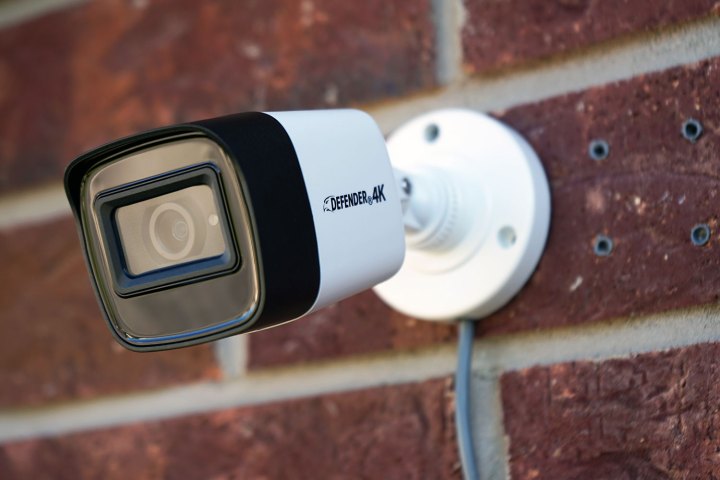
The 4K smart cam juggernaut is rapidly approaching. With the excellent Arlo Ultra blazing a trail earlier this year, prepare yourselves for a swarm of slinky new security cameras — packing ultra high-definition (UHD) image quality and other trinkets — to hit the market in the coming months.
While you may expect these dazzling new devices to arrive with hefty price tags, the $450 Defender 4K Wired Security System proves that may not be the case. It’s a 4-camera system supported by a stand-alone 1 TB network video recorder (NVR), negating the need for ongoing cloud subscription fees.
While it may not have all of the bells and whistles of pricier packages like Swann’s new 4K Security System, it promises to deliver a high standard of smart surveillance, with an 8.3 MP sensor delivering that
Complex, clunky cabling
Of course, a low price typically leads to compromise. Defender 4K cameras are compact and built for the elements, with an IP67 weatherproof rating, but they’re not particularly pretty and lack advanced features like the integrated PIR sensors you’ll find on premium competitors. The supporting plastic wall mounts feel cheap and only offer vertical adjustment, making camera positioning more difficult than it should be.

Cabling is also quite complex, with individual — and chunky — 12-volt DC power and BNC data connectors favored over a more convenient power over Ethernet design. All four cameras connect to a single power supply and directly to the NVR, so you’ll certainly need to think through your wiring design and power outlet availability ahead of installation. Considering Arlo Ultra’s wire-free design and easy installation, Defender 4K looks to be quite the dinosaur.
Pin-sharp 4K, narrow field of view
You’ll be delighted with Defender’s 4K images, which are crystal clear, with accurate colors and balanced contrast. Night vision delivers well-illuminated images with good range. Video quality and detail impresses, whether you’re monitoring the feeds on a small
Dated mobile app
Like most modern NVR systems, you can choose to manage cameras and recordings directly using a supplied USB mouse or via an accompanying mobile app. We found Defender’s NVR software to be responsive. Accessing camera feeds and configuring recordings was easy enough, although if you’re new to multi-camera security apps, you’ll need to invest plenty of time getting up to speed with Defender’s advanced settings and technical terms.
We found connecting the supporting mobile app to be trickier than most security systems, requiring settings that need to be tweaked on both NVR and a smartphone, as well as a scan of a QR code on screen (which didn’t work) or a second QR code stuck onto the NVR hardware. The clunky setup experience provided a clear indication that Defender’s app — and overall user experience — lacks the friendly, intuitive design we expect from modern smart home devices.
Monitoring our four cameras via the mobile app was reasonably straightforward, as was accessing previously captured recordings. But while we admire the jump to 4K resolution, Defender
Conclusion
A price tag of $450 is certainly attractive for a 4-camera UHD NVR system, but you’ll need to invest a significant amount of time installing, configuring, and, in some cases, battling Defender 4K’s old-school hardware, interface, and feature design to overcome its limitations.
Editors' Recommendations
- Best 4k security cameras of 2022
- Swann beefs up its home security offerings with 4K recording and DVR/NVR







